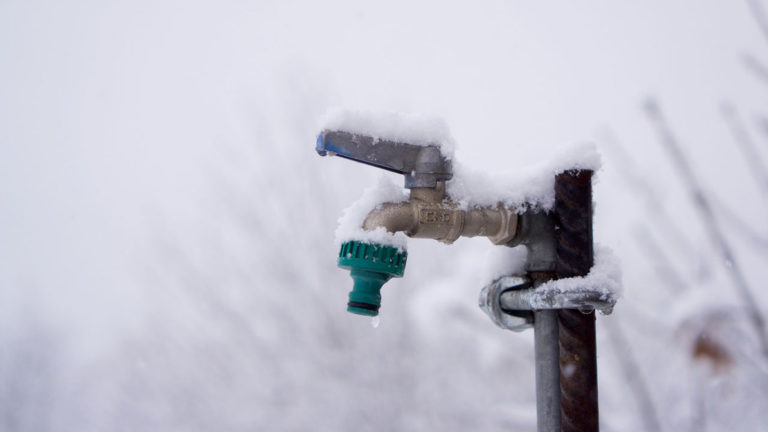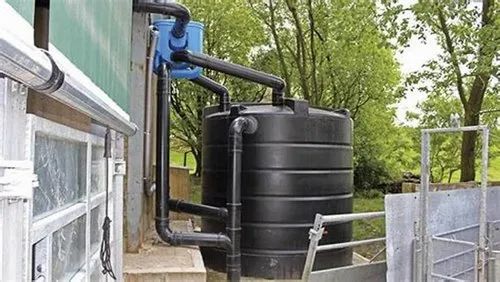Rainwater collection is an age-old practice that has gained significant attention in recent years due to its potential to provide sustainable and reliable water supply.
The process involves collecting and storing rainwater for various uses such as irrigation, flushing toilets, and even drinking water.
But have you ever wondered about the science behind this ancient technique?
From understanding the factors that affect rainwater collection to identifying the best practices for a successful system, we’ll delve into the fascinating world of rainwater harvesting and explore the cutting-edge technology being used today.
Get ready to learn how you can capitalize on nature’s free resource and make your own home more sustainable!
Water is a precious resource
Rainwater collection systems can help conserve water and reduce the demand on municipal water supplies, especially during times of drought or other water shortages.
By harnessing and storing rainwater, homeowners and businesses can reduce their reliance on municipal water supplies, which can help to conserve water and reduce the strain on the water supply system.
This is especially important during times of drought or other water shortages, when water demand is highest and supply is at its lowest.
With a rainwater collection system, you can collect and store rainwater for non-potable uses such as flushing toilets, washing clothes, and watering gardens.
This can help to save up to 50% of your municipal water supply and reduce your water bill.
By using rainwater for these non-potable purposes, you can help to conserve potable water for drinking, cooking, and other essential uses.
Overall, installing a rainwater collection system can be a smart and effective way to conserve water and reduce the demand on municipal water supplies, especially during times of drought or other water shortages.
Roofs are a major source of rainwater
The average roof can collect a significant amount of rainwater, depending on the size of the roof, the location, and the time of year. In many areas, it is legal to collect rainwater from your own roof.
The average roof can collect a substantial amount of rainwater, ranging from several gallons to hundreds of gallons, depending on factors such as the size of the roof, its location, and the time of year.
In many regions, it is permissible to collect and use rainwater that falls on your own roof, providing a cost-effective and environmentally friendly source of water for various household needs, such as flushing toilets, washing clothes, and irrigating gardens.
By installing a rainwater harvesting system, you can not only reduce your water bills but also contribute to a more sustainable future.
In areas with adequate rainfall, it is possible to collect a significant amount of rainwater, particularly during the peak summer months.
A modestly sized single-family home with a moderate-pitched roof can easily collect over 1,000 gallons of rainwater in a single storm.
Depending on your location and the size of your roof, you may be able to collect even more.
For example, in areas with high precipitation rates like the Pacific Northwest or Appalachian regions, a typical two-story home with a 1,500-square-foot roof could collect over 5,000 gallons of rainwater in a single day.
Collecting and using rainwater from your own roof is often legal, and in many cases, it is encouraged by local governments.
In some states, such as Oregon and California, it is actually mandated by law that new construction projects install rainwater harvesting systems.
These regulations are put in place to reduce the strain on municipal water supplies, help mitigate the effects of drought, and promote water conservation.
However, before you begin collecting rainwater, it is essential to check with your local authorities to ensure that it is legal and compliant with any regulations in your area.
Rainwater is a natural filtration system
As rainwater falls on the roof, it passes through a natural filtration system, including leaves, branches, and other debris, which can help remove impurities and pollutants.
As rainwater falls on the roof, it undergoes a natural filtration process, where it is purified by passing through a series of leaves, branches, and other debris.
This filtration system acts as a barrier against impurities and pollutants, helping to remove any unwanted particles or substances that may be present in the water.
The leaves and branches absorb and break down the impurities, while the other debris helps to physically block them from passing through the system.
The result is rainwater that is cleaner and safer for use, making it ideal for irrigation, drinking, or other household purposes.
By harnessing the power of nature’s filtration system, homeowners can enjoy the benefits of clean and pure rainwater, all while supporting a more sustainable and eco-friendly lifestyle.
Gutters and downspouts are essential
Gutters and downspouts are critical components of a rainwater collection system, as they direct the rainwater from the roof to a storage tank or other collection device.
Gutters and downspouts are indispensable elements of a rainwater collection system, serving as the backbone of the entire network.
These components are responsible for directing rooftop runoff into a storage tank or other collection device, ensuring that precious rainfall is not wasted.
The gutters are strategically positioned along the edges of the roof, collecting and channeling the water into the downspouts.
These vertically-oriented conduits then descend from the roof, carrying the harvested rainwater to its next destination.
To function effectively, gutters and downspouts must be properly sized and installed, taking into account factors such as roof slope, drainage capacity, and local climate conditions.
A well-designed and maintained rainwater collection system will reap substantial benefits, including reduced water bills, decreased stormwater runoff, and a more sustainable approach to managing this valuable resource.
Storage tanks are important
Storage tanks are necessary to collect and store rainwater for later use. Tanks can be made of a variety of materials, including plastic, metal, and concrete.
Rainwater collection and storage tanks are a important component of any successful rainwater harvesting system.
These tanks provide a reliable and sustainable source of water for irrigation, toilet flushing, and other non-potable uses.
When selecting a storage tank, it’s important to consider the materials of construction, as each material offers its own set of benefits and drawbacks.
For example, plastic tanks are lightweight, easy to install, and resistant to corrosion, making them an excellent choice for residential systems.
Metal tanks, on the other hand, offer superior strength and durability, making them better suited for commercial and industrial applications.
Concrete tanks provide the highest level of durability and can withstand extreme weather conditions, but are more expensive and require skilled installation.
Regardless of the material chosen, it’s important to ensure that the tank is properly sized to meet your specific needs and that it is installed in a location that allows for easy access and maintenance.
By investing in a high-quality storage tank, you can ensure a reliable source of rainwater for your home or business, while also reducing your reliance on municipal water supplies and lowering your water bills.
Harvesting rainwater can reduce stormwater runoff
By collecting rainwater, you can reduce the amount of stormwater runoff that enters local waterways, which can help prevent erosion, flooding, and pollution.
Collecting rainwater is an effective way to mitigate the impact of stormwater runoff on local waterways.
By harvesting and utilizing rainwater, you can significantly reduce the amount of stormwater that enters local waterways, thereby preventing erosion, flooding, and pollution.
This is because stormwater runoff often carries pollutants and debris into waterways, causing erosion and damage to the environment.
By collecting and using rainwater, you can reduce the amount of pollutants and debris that enter waterways, thereby reducing the risk of erosion and flooding.
Collecting rainwater can help to recharge groundwater aquifers, which can help to improve water quality and support local wildlife.
To collect rainwater, you can install a rainwater harvesting system, which can be as simple as a rain barrel or as complex as a complete stormwater management system.
These systems typically include a roof catchment, gutters, and a storage tank, which can be connected to your home’s plumbing system to provide a reliable source of water for irrigation, toilet flushing, and other non-potable uses.
By investing in a rainwater harvesting system, you can not only reduce your environmental footprint but also save money on your water bills.
Rainwater can be used for a variety of purposes
Rainwater can be used for a variety of purposes, including irrigation, flushing toilets, and washing clothes and cars. It can also be used for drinking water, although it may need to be treated first.
Rainwater harvesting is an effective way to collect and utilize this precious resource for a variety of purposes.
One of the most common uses of rainwater is irrigation, which not only helps to conserve water but also reduces the amount of potable water used for this purpose.
Flushing toilets and washing clothes and cars are other practical applications of rainwater, as it is abundant and free from many of the contaminants found in tap water.
With proper treatment, rainwater can be safely consumed, providing a reliable source of drinking water during dry spells or water shortages.
Overall, rainwater harvesting is a valuable practice that can help to reduce water waste, lower water bills, and provide a sustainable source of water for various needs.
Maintenance is important
Regular maintenance is essential to keep a rainwater collection system functioning properly. This includes cleaning gutters and downspouts, inspecting storage tanks, and treating the water for purification before use.
Regular maintenance is important to ensure your rainwater collection system operates efficiently and effectively.
Clean gutters and downspouts are essential to prevent debris and sediment from entering the storage tank, where it can cause contamination and reduced water quality.
Inspect your storage tanks regularly for any signs of leakage, corrosion, or infestation.
Treating the water for purification before use is also important to remove any harmful bacteria, viruses, or other contaminants that may be present in the rainwater.
By regularly cleaning and inspecting your system, you can ensure that your rainwater is safe for consumption and use around the home.
In addition to regular cleaning and inspection, it’s also recommended to monitor the water quality regularly to ensure it meets your health and safety standards.
This can be done by testing the water for pH levels, turbidity, and coliform bacteria to ensure the water is safe for consumption.
Proper regular maintenance will help to extend the life of your rainwater collection system and ensure it continues to function effectively.
Want More? Dive Deeper Here!
Hey there! If you’re the type who loves going down the rabbit hole of information (like we do), you’re in the right spot. We’ve pulled together some cool reads and resources that dive a bit deeper into the stuff we chat about on our site. Whether you’re just killing time or super into the topic, these picks might just be what you’re looking for. Happy reading!






